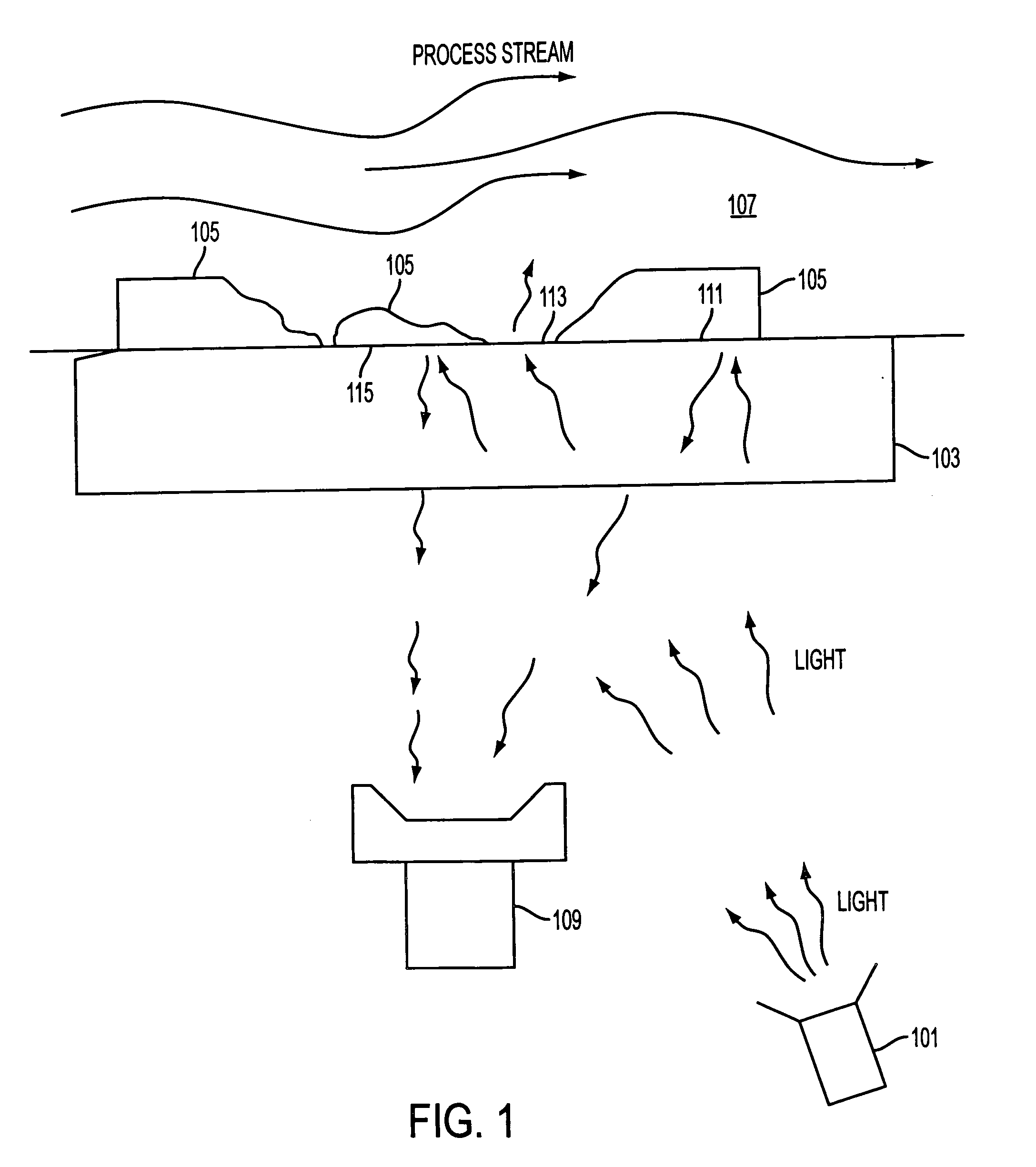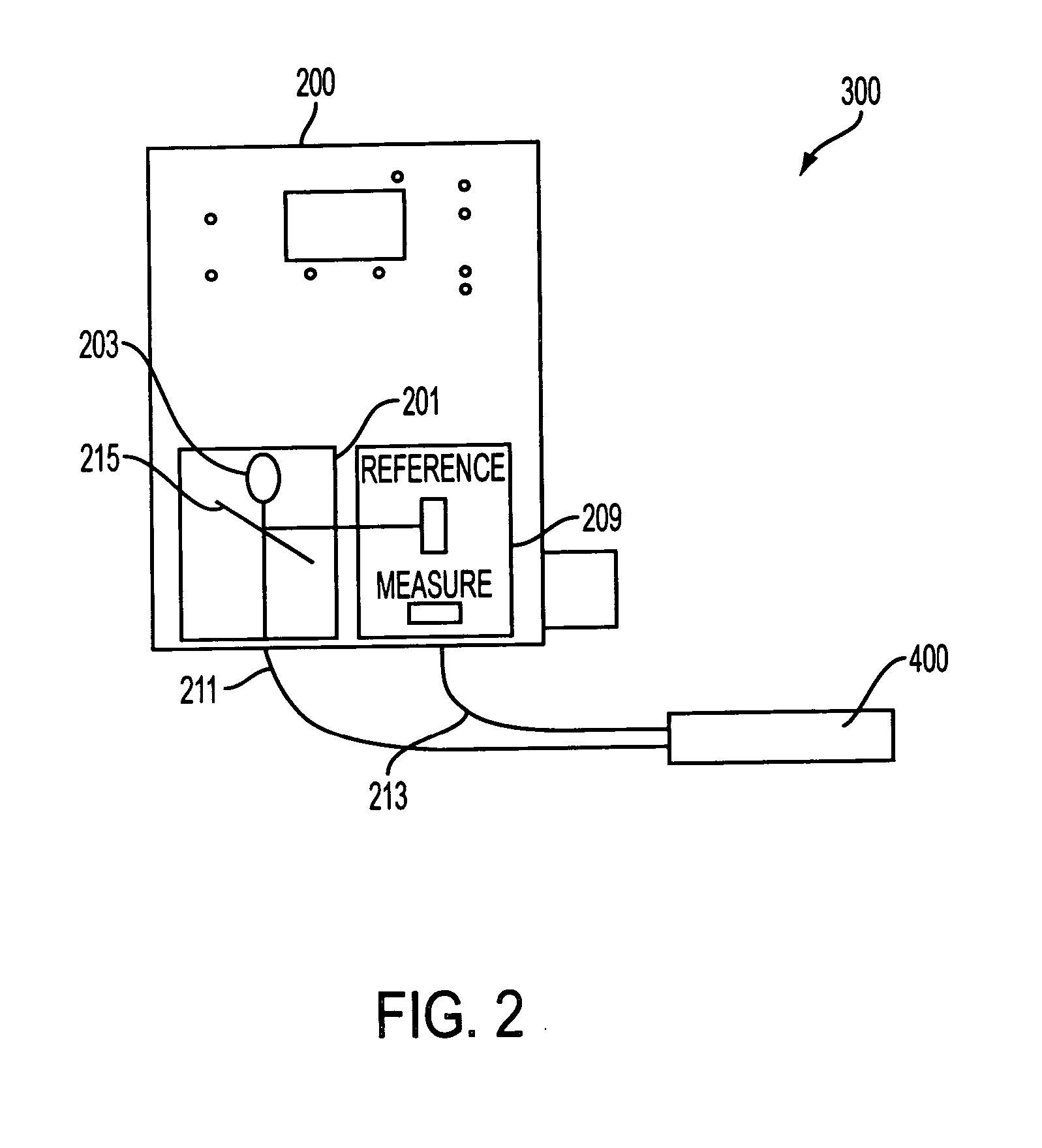Corrosion monitoring system, optical corrosion probe, and methods of use
a corrosion monitoring and optical corrosion technology, applied in the direction of optical radiation measurement, fluorescence/phosphorescence, instruments, etc., can solve the problems of significant repair costs, possible other dangers, and very real problems of corrosion, and achieve the effects of improving the accuracy of inspection and testing
- Summary
- Abstract
- Description
- Claims
- Application Information
AI Technical Summary
Benefits of technology
Problems solved by technology
Method used
Image
Examples
Embodiment Construction
[0034] In a general overview, an embodiment of the corrosion monitoring system preferably operates on the concept of reflectance from a surface. The embodiments discussed herein presume that the corrosion causing material is a fluid and that the fluid is within a section of pipe whether in a stationary or flowing state. For ease of description, the system encasing the process stream will often be referred to as a pipe, however, this term is not intended to be limiting to particular vessels for holding or transporting the process stream. The corrosion caused by the fluid's interaction with the material of the vessel is the corrosion which is desired to be monitored or detected. The fluid in the vessel being monitored is referred to as a process stream. The term “process stream” is used because in most situations that fluid will be flowing or moving in the pipe. However, the term is in no way intended to require that the fluid be moving. Further, while the stream will generally be pre...
PUM
 Login to View More
Login to View More Abstract
Description
Claims
Application Information
 Login to View More
Login to View More - R&D
- Intellectual Property
- Life Sciences
- Materials
- Tech Scout
- Unparalleled Data Quality
- Higher Quality Content
- 60% Fewer Hallucinations
Browse by: Latest US Patents, China's latest patents, Technical Efficacy Thesaurus, Application Domain, Technology Topic, Popular Technical Reports.
© 2025 PatSnap. All rights reserved.Legal|Privacy policy|Modern Slavery Act Transparency Statement|Sitemap|About US| Contact US: help@patsnap.com



